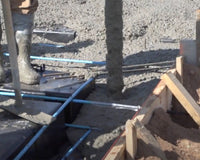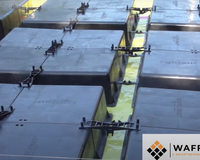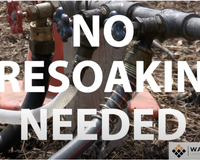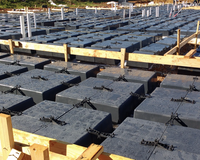Builders in Texas are keenly aware that the state is known for what the industry calls “unstable” or “active” soil. This is a soil type that is not ideally suited to support a structure of any kind… at least not without some work. And, before you decide to pack your bags and move to Oklahoma in search of better soil, know that Active Soils exist all over the world… even in Oklahoma!
What causes the soil to be “active”?

Much of the soil in Texas, the central United States, and most of the Southern States, contains a high percentage of clay. This clay, known as Montmorillonite or Bentonite, expands in the presence of moisture and shrinks when dry. In fact, a molecule of Bentonite will expand up to 8 times its original size in the presence of moisture.
In the summer, the upper layers of the soil dry out from more exposure to the sun, less rain, and higher temperatures. Longer periods of time with no rain (6 weeks or more) can cause the soil to dry to a depth of several feet. This causes the soil to shrink as the clays dries, causing cracks and void spaces in the soil. In cooler and wetter seasons, the moisture will return to the soil, causing it to swell. This closes the cracks and causes the surface of the soil to rise. This phenomenon continues seasonally, year after year, loosening the soil and creating a very unstable building site.
And, because moisture percolates vertically through the soil, when a foundation is poured, it acts as a “cap”, trapping the moisture in the ground. This raises the overall moisture content of the soil and causes the Bentonite to expand.
So, what can I do about it?

The most common solution to mitigate the negative effects of Active Soil is to condition the native soil to make it less active. This typically involves moisture conditioning in the form of mechanical compaction or moisture injection. In both cases, the goal is to “pre-soak” the soil, causing it to expand before building a foundation. Mechanical compaction goes one step beyond moisture injection by removing several feet of native soil from the site, then reinstalling that soil in compacted and moisture controlled “lifts”. A lift is typically 6” – 8” of soil.
The result is a pad site that contains soil that has been pre-swelled so that the potential of upheaval is reduced or (hopefully) eliminated. The process is expensive and can add 1-2 weeks of time to a project schedule.
Another common remedy is to remove several feet of natural soil from the building site and replace it with what is called “Select Fill” … a blend of sand, silt, and clay in proportions that yield a very stable soil that will not expand or contract as a result of changes in moisture. This type of soil will have a low “PI” (plasticity index), so it is less likely to expand. (See our article on How to Read a GeoTechnical Report for more information).
The final step in mitigating the risks of active soil is to provide GeoTechnical information to an Engineer who will use this data to design a foundation that can withstand the movement in the soil. GeoTechnical Reports contain data that relates to the soil’s contents, its likelihood to expand, its moisture content, and its Plasticity Index (the range of moisture over which the soil is expansive).
Keep in mind that any soil that contains one of the elements of Active Soil, will move over time. So, once the soil has been conditioned to reduce swelling and other movement, it is the job of a Structural Engineer to design a foundation that can withstand the movement.
See our article on Texas Foundations for recommendations of foundation types to use in Texas





